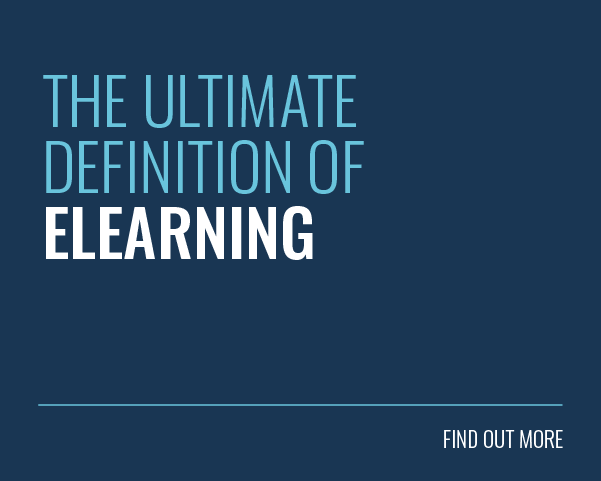Are your online learners clicking away before they achieve the learning objectives? Do you notice long lapses between self-guided online sessions? In this article, I’ll highlight 7 signs that your eLearning course may be too long for modern learners.
How To Tell If Your eLearning Course Length Is Too Long For Modern Learners
You must be able to give your online learners the info they need quickly and conveniently. They don’t have much room in their schedule to participate in lengthy eLearning courses, even if it will help them solve a problem or fulfil their potential. The simple truth is that today’s online learners are busy multi-taskers who are dealing with a multitude of distractions. Below are 7 tell-tale signs that your eLearning course length is too long for your modern audience, as well as tips to help you shorten seat time without sacrificing knowledge retention.
1. Low LMS Engagement Stats
LMS metrics can tell you a lot about how online learners interact with the eLearning course and if they’re connecting with the subject matter. They also indicate whether it’s the ideal eLearning course length for modern learners, or if you may need to break it down into bite-sized resources. Low engagement and participation stats are a tell-tale sign that online learners are overwhelmed by the sheer abundance of information. The eLearning course is too long to fit into their busy schedules or it doesn’t give them the “moment of need” info they require. As a result, they avoid the eLearning course at all costs. One of the most significant reporting factors to consider is how long online learners participated before logging off. For instance, they only completed the first 3 minutes of the first online training module, then realized that the progress bar barely moved.
2. High Drop-Out Rates
You notice that your drop-off rates are high, and the number is still on the rise. Every month a significant percentage of your modern learners clicks away, never to return. In the case of mandatory online training, employees may not be able to simply drop out of the eLearning course. However, they may take longer to complete the necessary requirements or show low participation scores.
3. Modern Learners Are Unable To Apply The Information In The Real World
The eLearning course is so long and involved that your modern learners cannot apply what they’ve learned in a real-world context. This can usually be attributed to cognitive overload. Even if they do complete the eLearning course, online learners might not be able to use the information to improve their performance. Best-case scenario, they’ll remember a few of the key takeaways for a short while, then forget it due to the lack of knowledge reinforcement.
4. Frequent Training Lulls
Modern learners may be aware of the benefits your eLearning course can offer, which prompts them to log in whenever they have some free time. Thus, your completion rates may be high, but how long does it take them to reach their destination? Frequent training breaks or lulls is a sure sign that your eLearning course is too long for modern learners. For example, LMS reports show that it took some learners two weeks to complete your one-hour course. Either they couldn’t fit it into their schedule in a single sitting or they could only digest a few minutes worth of information before taking a mental break.
5. Low Assessment Scores
Low assessment scores indicate that online learners didn’t get the information they needed or were unable to remember the main discussion points. Either way, it’s a symptom that your eLearning course is too long for today’s online learners. This is especially true when online learners who are usually top performers fail to achieve the minimum score. As you know, it’s not a matter of low motivation or personal drive.
6. Your Modern Learners Rely Heavily On Microlearning Online Training Resources
Microlearning online training resources are essential for modern learners. They give them the opportunity to deepen their understanding and focus on personal areas for improvement. However, they should not be the sole source of knowledge, but a supplementary tool that fills in the gaps and reinforces the information. Modern learners often rely too heavily on microlearning online training libraries when the full-fledged eLearning courses are too long or involved. As such, they only explore bits and pieces of the subject matter instead of seeing how it all ties together.
7. Negative Feedback
One of the most direct ways to gauge whether your eLearning course length is too long is to evaluate modern learners’ feedback. What do they say about the eLearning course on social media? Are they leaving unfavourable ratings and reviews that explicitly mention the eLearning course length? If you encounter negative feedback, try reaching out to the commenter to dig deeper and identify areas for improvement.
Extra Tips To Shorten Your eLearning Course And Improve Learner Engagement
1. Use Content Chunking
Break the eLearning course down into smaller online training modules or activities that still serve as a single learning unit. Meaning that they give modern learners all the information they need to complete the task or take skill master to the next level. As an example, an hour-long course becomes six 10-minute online training modules that explore different subtopics or skills.
2. Create Microlearning Online Training Repositories
Create microlearning online training resources that provide supplemental knowledge. As I mentioned earlier, your modern learners shouldn’t rely solely on bite-sized online training tools. However, microlearning online training activities give them the ability to improve comprehension on their own in order to enhance the training benefits. They can also use these bite-sized online training repositories to refresh their memory and reinforce key concepts.
3. Research Your Audience
Research your audience to develop more emotionally compelling eLearning content based on their backgrounds and needs. They’re more likely to sit through moderately long eLearning courses when you pique their interest and create a personal rapport.
These are just 7 warning signs that your eLearning course length is too long for modern learners. However, you should do your own research to determine if there are any other engagement sticking points. For example, conduct surveys and polls to get to the bottom of low participation scores or set up a focus group to gather input from your modern learners before you launch to ensure that it’s the perfect length.
How can you design an eLearning course that keeps up with the ever-evolving needs of modern learners? Read the article 7 Tips To Engage And Inspire Modern Learners In eLearning to learn not only how to instruct the tech-savvy online learners of today, but also how to inspire and engage them.
 About Christopher Pappas
About Christopher Pappas
Christopher Pappas is founder of The eLearning Industry’s Network, which is the largest online community of professionals involved in the eLearning Industry. Christopher holds an MBA, and an MEd (Learning Design) from BGSU.
eLearning Blogger | EduTechpreneur | eLearning Analyst | Speaker | Social Media Addict








